Since the Arab Spring events began in 2011, Russia has been exceedingly active in the Middle East. The region now compromises an important vector of Russia’s Eurasian strategy, and successful policy applications here can set the stage for Russia’s future return as a global actor. It is thus necessary to explore Russia’s Mideast policy more in-depth, with a specific emphasis on the Iranian and Syrian applications.
The Limits of the Mideast:
To begin with, the concept of the Mideast must be defined before going any further into the research. When evoking the region, the author intends to describe the area between Turkey, Iran, the Arabian Peninsula, and Egypt (the ‘traditional’ Mideast). Some foreign policy commentators, primarily American, hold the view of a “Greater Middle East” which at times expands the author’s defined boundaries to include Arab Africa, the Caucasus, Central Asia, Afghanistan, and Pakistan.
The Historical Development of Russia’s Regional Relations:
The Soviet Era:
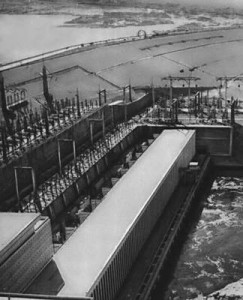
The current policy of Russia has some of its roots in the Soviet era. Therefore, it is necessary to begin with a brief historical analysis of Russia’s policy developments there before addressing the current state of affairs. Throughout the Cold War, the Soviet Union had warm relations with Iraq, Syria, and South Yemen. For a period of time, relations with Egypt were very fruitful under Nasser, but this trajectory was reversed under Sadat and Egypt ‘flipped’ over to the side of the Americans and Israelis.
The Post-Soviet Era:
The next period of historical relations stretched between 1991-2003. At the beginning of this era, the Soviet Union acquiesced to the US-led Operation Desert Storm. By betraying its closest Mideast ally at the time, Iraq, it set a negative example for its other allies across the world. This was indicative of the policy rot occurring within the Soviet Union at the time, as the nation was becoming so domestically unstable that it was fully unable to project its previous level of influence onto its Warsaw Pact allies, let along to friends further afield in the Mideast. Following the Cold War, Russia retained cordial relations with Iraq and Syria, although its relationship with South Yemen evaporated after unification with the North in 1990 (and the failed Southern secession attempt in 1994). For the most part, relations with the Mideast were at a standstill. Russia had to reassert stabilization within its own borders before projecting influence externally. This would not occur until the next period in relations.
Between the Iraq War and the Arab Spring:
2003-2011 marks the third period of Russian engagement with the Mideast. Russia vocally expressed its severe opposition to the American War in Iraq, albeit to not avail. The fall of Saddam Hussein’s government officially removed Russia’s policy anchor and then-springboard for future interaction with the region. Iraq’s geostrategic position was key for Soviet and future Russian policy planning, and thus, the country’s descent into an American military garrison was detrimental to Russian long-term interest.
It was shortly thereafter that the US began to ratchet up its militant rhetoric against Iran, ostensibly under the pretenses that Iran’s nuclear energy program was really a cover for a nuclear weapons program. Russia staunchly came to the aid of Iran, a country with whom it has had very little diplomatic contact with since the Russian Imperial period. It was absolutely against any type of military strike against Iran and stated its support for the peaceful nuclear energy projects that it is jointly developing there.
The Benefits of Iranian Strategic Cooperation:
The diplomatic engagement with Iran was a strategic move to compensate for the “loss” of Iraq and in preparing the ground for a future Russian foreign push into the region. Iran, historically a regional hegemon in the region, had appeared since that time to be on the upswing. Although hedged in by American military forces to the East and the West, the nation still stood strong in its soft power and covert involvement in the Mideast. As a case in point, Iranian-sympathetic and affiliated organizations in Iraq ascended to the height of power in Baghdad, resulting in the current situation where Iraq is criticized by some Western observers as being a puppet state of Iran. Iran’s influence with Hezbollah, the arch-nemesis of Israel, also extends it a broad regional sway across the Mideast. Therefore, by defending Iran’s peaceful nuclear energy program and diplomatically doing whatever was within its power to prevent a Western military strike against the country, Russia was establishing a strong strategic relationship with an emerging power. This would then reach a new height of cooperation during the Syrian Crisis, with both Moscow and Tehran coming together to support Damascus.
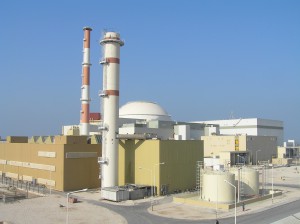
Siding with Iran, which was previously described as being on the regional upswing, has strong strategic implications for Russia in the Mideast. Because Iran is diplomatically isolated from the West, Russia saw a positive inroad for interaction. Aside from China (which Russia has a strategic partnership with), there was no competition with other Great Powers vying for Iran’s favor. Since Iran and Russia have considerably strengthened their relations over the past decade and forged even closer ties through the Syrian crucible, they can be described as close strategic allies in the Mideast. This carries with it important benefits for Russia, especially pending a successful (pro-governmental victory) conclusion of the Syrian Crisis. Iran would be a regional hegemon at that point, and Russia would continue to support it as a counter against the pro-American Gulf monarchies. A regionally entrenched Iran that is friendly towards Russia could also open the doors for further Russian diplomatic and economic activity in the Mideast, especially in regions where Tehran’s influence is strong. Thus, Russia and Iran would work hand in hand to reshape the geopolitics of the Mideast, making both pseudo-revisionist powers. The characterization of ‘revisionist’ is not meant in a negative way whatsoever, but merely in relation to the fact that both powers want to revise the US-constructed regional power apparatus that is currently in place (and weakening).
The Historical Relationship with Syria:
Pertaining to Syria, the country has always had a special relationship with Russia, stretching back to the days of the Soviet Union. The Ba’ath Party has socialist roots, and as a result, it established a friendship with the USSR during the Cold War. Relations deepened to the point where a naval facility was constructed in Tartus, and to this day, it remains Russia’s only foreign naval base.
But military considerations are not the only basis of friendship between the two states. Hafez Assad cultivated contacts with Moscow during the Soviet period, and although the USSR disintegrated and the old Communist Party guard was removed, Assad continued to win elections and stay the President of Syria. This allowed for a continuity of network relationships to take place between Moscow and Damascus, seeing as how the same decision maker was ruling Syria from the middle of the Cold War until 2000, while at the same time Russia was in the throes of domestic economic and social destabilization. The diplomatic anchor of the Assad family was pivotal in moving the constructive Soviet-Syrian relations towards new Russian-Syrian relations.
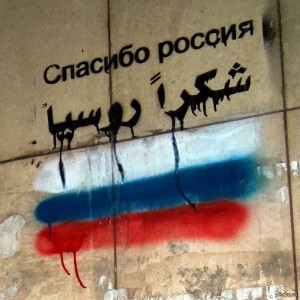
Syria has also been Russia’s only consistent ally in the Mideast. While Saddam was forcibly removed from power by the US and later executed, cooperation with Iran is only a relatively new era of relations for Russia. Syria has always been a friend of Russia and vice-versa, making Moscow’s current cooperation and support with Damascus an organic development. Thus, Syria has always retained an important position in Syrian Mideast policy planning, even if Moscow was unfortunately too hampered with domestic instabilities to properly interact with its long-term partner.
Russia’s Guiding Principles for its Contemporary Mideast Policy:
Taken together, Iran and Syria became the focal points of Russia’s Mideast policy after the beginning of the Arab Spring events. The period from 2011 until the present day marks the new era of Russia’s Mideast foreign policy, which may possibly be Russia’s most important epoch pertaining to this region. It is therefore useful to address three underlying themes that dictate its behavior:
(1) Russia understands that popular sentiment (or the perception of such) can erupt against any government, no matter their level of legitimacy. This feeling is accepted, but political extremism (fundamentalist Islam), radical change (sudden and sweeping changes to the governing structure, outside-supported ‘revolutions’), and armed insurgency against the authorities are not.
(2) As with all countries, Russia was struggling to make sense of and adapt to the transformative processes (whether endemic or outside-influenced is a moot point in this theme) that were sweeping the region. It had to ‘go with the flow’ and readjust itself to meet the changing dynamics, as well as forecast the future course of events and the actions of outside actors (i.e. NATO, US).
(3) Russia consistently opposes all out-of-region (unrequested) military involvement. It is adamantly against the US and other Western (NATO) powers militarily intervening in the region, and after learning its lesson from the West’s manipulation of UNSC 1973, Russia dedicated itself to preventing this scenario from being repeated in Syria. This point is especially important since it explains Russia’s approach towards Iran’s involvement in Syria and its lack of criticism of Saudi intervention in Bahrain (both regional actors whose support was requested).
Humanitarian Considerations:
Aside from geopolitical calculations and established governmental friendships, Russia’s policy towards Syria is also based on humanitarian considerations. Although Putin was speaking about Russians being victimized by political extremism in Ukraine in a recent statement, it can be understood that Russia is against any type of political extremism anywhere in the world, seeing it as a violation of the human rights of those unwilling subjected to it. In this context, Russia’s opposition to the terrorist groups operating in Syria and its reinforcement of support for the legitimate government isn’t only about preventing a terrorist nest from taking root near the Northern Caucasus, but also to protect the dignity and social living standards of regular Syrians.
Russia as a Conservative IR Actor:
Russia has also displayed itself to be a conservative IR actor through its policy in Syria. Moscow is against the rise of violent non-state actors (NSA) that could pose a threat to the existing structure of international relations. To put it in a theoretical way, Russia is a realist actor that does not want the liberal model to prevail. It is not that it refuses to recognize the importance of NSAs (Gazprom is a strong actor of Russian interests, and peaceful NSAs supported Russia’s strategic vision in Crimea), but that it feels that an unrestricted outpouring of these entities can result in explosive growths of violence and terrorism, as is now seen in Syria and was previously seen in Chechnya.
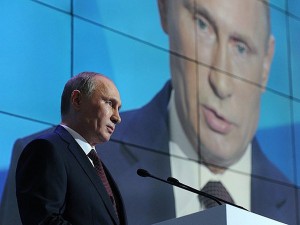 The Significance of Derzhavnost:
The Significance of Derzhavnost:
Finally, it can be intuited that Russia also places an implicit preference for dealing with states which have strong central governments. ‘Derzhavnost’ (a strong state) is a keystone of the de-facto Statist domestic policy ideology that has been en vogue in Russia since Putin’s ascent in 2000. With this in mind, the strong government of Syria almost seems as a precursor to the derzhavnost model currently in place in Russia. Thus, the two states, on the governing level, have a similar model of engagement vis-à-vis their citizens. Neither of them could be defined as Western-style liberal democratic states, and as is known, that said type of state does not function properly when it is militarily (or covertly via Color Revolutions) exported to countries that do not have a history of conducting themselves in this manner. On a closing not for this theme, strong states also highly value state sovereignty, which is an official guiding principle of Russian foreign policy. This brings Syria and Russia even closer together on an ideological level than would be apparent at first glance.
The Importance of a Pro-Government Victory in Transforming the Mideast:
The Syrian Crisis and its resolution (whichever way) could possibly be one of the most transformative events in the Mideast’s history in the past century. Russia has been staking its entire regional (and perhaps, global) reputation on supporting the Syrian government. It has already been explained why Russia has made this decision, but since it is either “one way or the other”, Russia’s choice can be considered a gambit. It can either end very well or very bad for Russia’s regional vision. Russia, Iran, and Syria are obviously in favor of a pro-government victory, and this scenario will thus be explored in this section.
In this ‘memory of the future’, order and stability are restored to Syria and the Mideast. The sectarian killings carried out by the pro-Western insurgents and their innumerable terrorist attacks that they habitually carry out will grind to a halt. This would improve the humanitarian situation in the country and allow Syria to work on reconstructing itself with aid from its allies, which would most surely include Russia.
A pro-government victory would also be a huge defeat for the US, Turkey, Israel, certain EU states (France, the UK), and the Gulf monarchies that supported the anti-government fighters. It would officially signal the death of Turkey’s Neo-Ottomanism policy, and the US’ ‘parting gift’ (the Syrian Crisis) that it bequeathed to the region prior to its Pivot to Asia would be resolutely rejected. Russia’s foreign policy will be seen as a success, and its loyalty to its ally Syria will be evident to all. This would greatly promote Russia’s soft and diplomatic power not only in the region, but all across the world. After all, Russia’s diplomatic intervention already staved off an American military strike in Syria, and if it can be taken to its conclusion by bringing about the defeat of the pro-Western rebels, then its positive diplomatic reputation will be cast in stone. Russia will signal that it is officially back in the Mideast as a significant player and that it is stronger than it ever was in this region during the Soviet period.
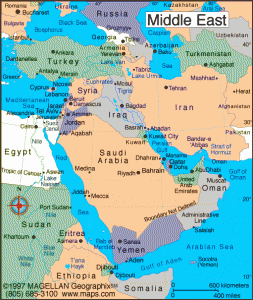 Syria, Iran, and Iraq would be joined in a strategic axis likely under the guiding influence of Tehran. Since Russia and Iran are close partners, this bloc will be pro-Russian and can help Moscow establish a foothold in the previously American-dominated Mideast. These three states can then continue with their plans for an Iran-Iraq-Syria gas pipeline, the idea of which is suspected of having prompted external actors to destabilize Syria in the first place. Such a plan can radically change the geopolitics of the global gas market and open Iran and its partners up from Western-imposed international isolation. Additionally, it even offers the prospect of a future ‘gas OPEC’ between Russia and Iran (two of the largest suppliers of the resource), and it goes without saying how fundamentally transformative such a measure would be.
Syria, Iran, and Iraq would be joined in a strategic axis likely under the guiding influence of Tehran. Since Russia and Iran are close partners, this bloc will be pro-Russian and can help Moscow establish a foothold in the previously American-dominated Mideast. These three states can then continue with their plans for an Iran-Iraq-Syria gas pipeline, the idea of which is suspected of having prompted external actors to destabilize Syria in the first place. Such a plan can radically change the geopolitics of the global gas market and open Iran and its partners up from Western-imposed international isolation. Additionally, it even offers the prospect of a future ‘gas OPEC’ between Russia and Iran (two of the largest suppliers of the resource), and it goes without saying how fundamentally transformative such a measure would be.
***
It should by now be evident to all outside observers that Russia is heavily invested in the outcome of the Syrian Crisis. Russia’s interests are guided by history, humanitarian considerations, and pragmatism. It was by Moscow’s loyal and steadfast support of Damascus that its regional foreign policy began to be noticed. Prior support of Iran’s nuclear energy program was significant, but it did not signify the same level of Russian political involvement in the Mideast as the Syrian case does. Russia has always had some level of contact with its Mideast partners, but it was only with the Arab Spring events and their overspill into historical ally Syria that Russia cranked up its engagement there. It combined its newly developed relationship with Iran in order to multiply the effectiveness of its Syrian support efforts. Following the pro-government victory that it is betting on in Syria, Russia will then be able to use it Syrian and Iranian diplomatic successes as a springboard for future projections of Russian (soft) power in the area. This can bring about a rolling back of America’s former suzerainty over the Mideast and a striking change in the regional security architecture.
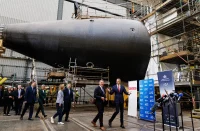
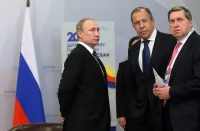
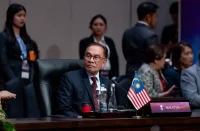



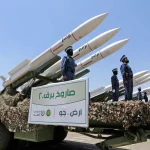
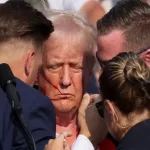






Pingback: La politica estera della Russia in Medio Oriente: Siria e Iran come trampolini regionali | Aurora
Pingback: Russia and the Multipolar Tug-of-War over the ‘Arab Yugoslavia’ | Oriental Review
Pingback: Washington’s Nightmare Comes True: The Russian-Chinese Strategic Partnership Goes Global (II) | Oriental Review
Pingback: Washington’s Nightmare Comes True: The Russian-Chinese Strategic Partnership Goes Global | Counter Information
Pingback: Washington’s Nightmare Comes True: The Russian-Chinese Strategic Partnership Goes Global | Global Research « The Progressive Mind
Pingback: The 4th Media » Washington’s Nightmare: Russian-Chinese Strategic Partnership Goes Global (I-II)
Pingback: 19. Washington’s Nightmare Comes True: The Russian-Chinese Strategic Partnership Goes Global (II) | Bibliografía Geopolítica y Globalización
Pingback: Le cauchemar de Washington se précise : le partenariat stratégique entre la Russie et la Chine s’étend | Réseau International
Pingback: Washington’s Nightmare Comes True: The Russian-Chinese Strategic Partnership Goes Global (II) | Conspiracies: Fact or Fiction
Pingback: Géopolitique : Le cauchemar de Washington se précise
Pingback: Le cauchemar de Washington se précise: Le partenariat stratégique entre la Russie et la Chine s’étend | Arrêt sur Info
Pingback: Munich conference: Western pseudo-multipolar stability theory in action | Oriental Review
Pingback: Putin And The Mideast’s Middleman: Egypt’s Strategic Game | EMerging Equity
Pingback: Washington’s Nightmare Comes True: The Russian-Chinese Strategic Partnership Goes Global
Pingback: The Shuttle Diplomacy To Save Syria | The Vineyard of the Saker
Pingback: The Shuttle Diplomacy To Save Syria ~ by Andrew Korybko | thewallwillfall
Pingback: Russia's Endgame in Syria – Andrew Korybko | Timber Exec
Pingback: Russia's Endgame in Syria - Business Recorders Russia News
Pingback: Russia’s Endgame in Syria -
Pingback: “The New Middle East”: Russian Style (I) | Oriental Review
Pingback: “The New Middle East” : Russian Style | Uprootedpalestinians's Blog
Pingback: “The New Middle East”: Russian Style Part I | SHOAH
Pingback: Russia’s military action first step towards revision of international relations, to replace US in the Middle East |
Pingback: Russia’s military action first step towards revision of international relations, to replace US in the Middle East | Alternative News Network
Pingback: Washington’s Nightmare Comes True: The Russian-Chinese Strategic Partnership Goes Global (II) – Qutnyti
Pingback: Le cauchemar de Washington se précise : le partenariat stratégique entre la Russie et la Chine s’étend | Cameroonvoice